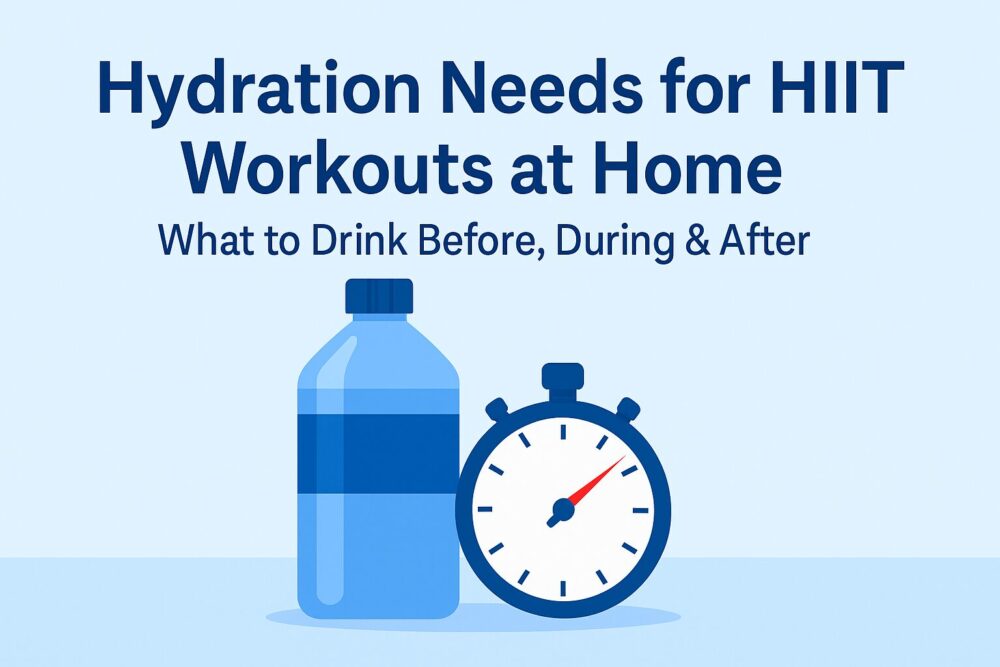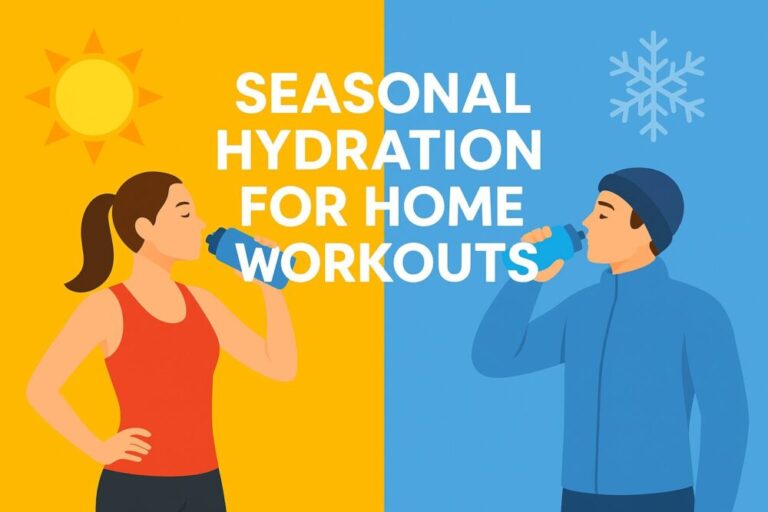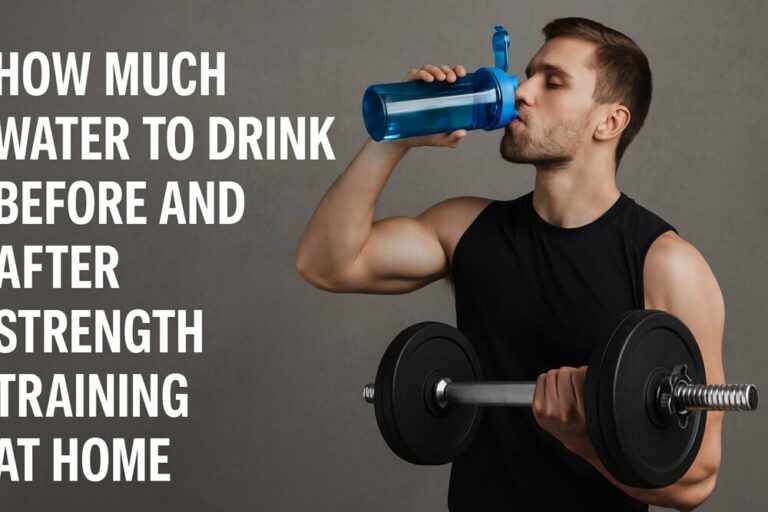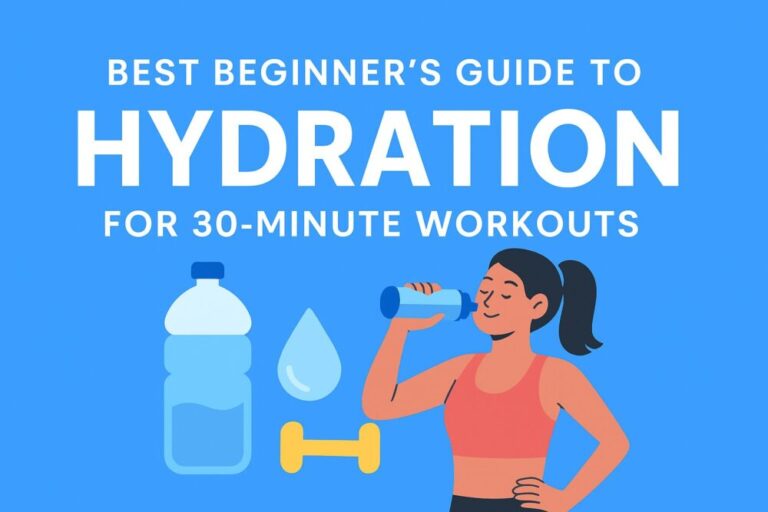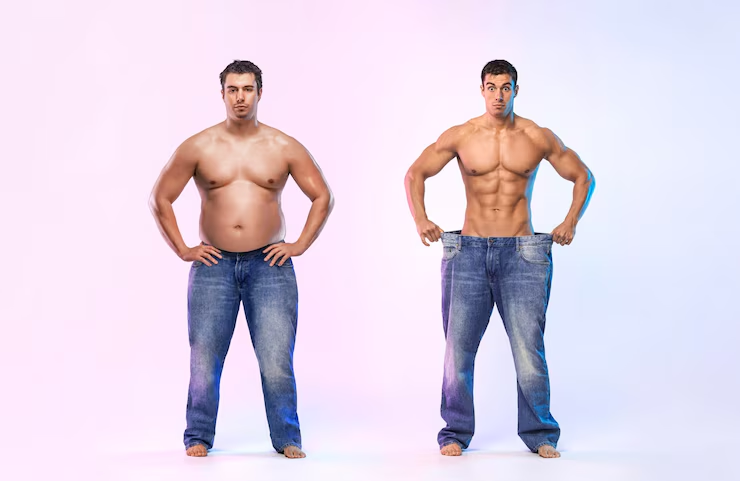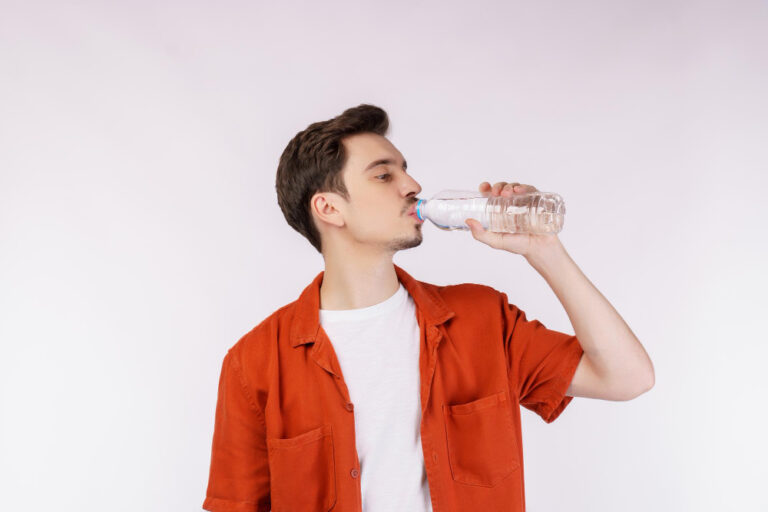I don’t know about you but for me doing HIIT workouts at home can feel a bit like wrestling a wild goose, sweaty, chaotic, and borderline triumphant if you don’t throw a dumbbell at the wall. But here’s the joke, without smart hydration, your powerhouse HIIT session might turn into a sluggish slog instead of a fat-burning fiesta.
Welcome to the unglamorous truth: hydration needs for HIIT workouts at home are more complicated than guzzling tap water when you’re parched. This guide serves up everything you need, pre-HIIT sipping, intra-HIIT fluid strategy, post-HIIT rehydration, delivered with a wink and backed by science.
Let’s get your water game so solid that your muscles will punch you for being too ready.
Why Optimizing your Hydration Needs for HIIT Workouts at Home is Crucial
High-Intensity Interval Training (HIIT) isn’t called “high-intensity” for nothing. Those rapid bursts of effort ramp up sweat rate and fluid loss, risking a drop in performance if you skimp on hydration. According to the Journal of the American College of Sports Medicine, Even a 2% loss of body weight due to dehydration can noticeably impair strength, focus, and recovery.
Dehydration thickens blood, reduces oxygen delivery, elevates heart rate, and sabotages cooling mechanisms, turning your HIIT session into a clumsy liability. 1This makes fluid intake, electrolyte balance, and personal sweat rate essential players in your home workout hydration plan.
And when you’re training at home-often in warmer or less ventilated rooms-you’re even more prone to overheating and fluid loss. That’s why a clear, evidence-based hydration plan should be part of your HIIT routine, not an afterthought.
Pre-HIIT Hydration: Setting the Stage
I usually think of pre-workout hydration like charging your phone before a long day, if you start on 40%, you’ll be scrambling to plug in halfway through. The same goes for HIIT: beginning your workout dehydrated means you’re already at a performance disadvantage.
How to prep your fluids before HIIT:
- 2–3 hours before training: Drink 500–600 ml (17–20 oz) of water or a low-calorie electrolyte drink. This window allows your body to absorb the fluids and balance electrolyte levels without leaving you feeling waterlogged.
- 10–20 minutes before starting: Top off with 200–300 ml (7–10 oz) to ensure your blood plasma volume is optimal for delivering oxygen and nutrients during your workout.
Pro Tip: If you tend to wake up and jump straight into a morning HIIT session, you’re likely starting dehydrated from sleep. Have a glass of water as soon as you get up, even before your coffee.
Staying Hydrated During HIIT
If pre-workout hydration is the warm-up act, hydrating during HIIT is the main performance. Your challenge? HIIT moves quickly, so you have to be strategic.
Here’s the game plan:
- Aim for 200–300 ml (6–10 oz) every 10–20 minutes. This aligns perfectly with most HIIT formats, as you can sip during your rest intervals without disrupting flow.
- If your session is under 30 minutes and not in a hot environment, plain water will do fine.
- For workouts over 45 minutes, or in hot/humid conditions, add electrolytes to replace sodium, potassium, and chloride lost through sweat. This helps maintain fluid balance and supports muscle contraction.
Post-HIIT Rehydration
Finishing your HIIT workout doesn’t mean you’re done hydrating. In fact, this is when your body is most eager to restore fluid balance.
Step 1: Measure the loss.
If you want to get precise, weigh yourself before and after your workout (ideally in similar clothing). For every 0.45 kg (1 lb) lost, aim to drink 500–700 ml (16–24 oz) of fluid. This replaces sweat losses without over-hydrating.
Step 2: Time it right.
Get at least 500 ml of fluids within the first hour after your workout, then continue sipping regularly for the rest of the day.
Step 3: Pair it with nutrients.
Combining hydration with a post-workout snack that includes protein helps accelerate muscle repair. If you’re curious how this works, check out How Protein and Water Work Together in Muscle Growth.
Pro Tip: Adding a pinch of salt or a few slices of cucumber to your post-workout water can improve flavor and encourage you to drink more.
Common Hydration Mistakes in Home HIIT
Even dedicated home athletes can get tripped up by these common pitfalls:
- Starting dehydrated.
Jumping into a session without pre-hydration is like running a race in flip-flops, you’ll get there, but it won’t be pretty. - Only drinking when thirsty.
Thirst is a lagging indicator, by the time you feel it, your performance may already be dropping. - Skipping electrolytes for longer/hot sessions.
If your shirt looks like it’s been through a monsoon, you’re losing more than water. Electrolytes are essential for muscle function and nerve signaling. - Over-hydrating with plain water.
Rare, but possible, especially if you chug huge amounts without replacing sodium. This can dilute blood sodium levels (hyponatremia), leading to dizziness and nausea.
Pro Tip: For hot-day sessions, review our How to Stay Hydrated During Summer Home Workouts for extra tips on balancing water and electrolyte intake.
Personalizing Your Hydration Plan
Actually, everyone’s hydration needs differ based on body size, workout intensity, room temperature, and other factors.
That’s why using the Water Intake Calculator can give you precise daily and workout-specific recommendations.For a broader perspective, check out The Ultimate Guide to Hydration for year-round hydration mastery.
Quick HIIT Hydration Reference
| Timing | Volume | Notes |
|---|---|---|
| Pre-HIIT | 500–600 ml + 200–300 ml | Sets hydration baseline |
| During HIIT | 200–300 ml every 10–20 min | Electrolytes if hot/long session |
| Post-HIIT | 500 ml + 16–24 oz per lb lost | Weigh before & after for accuracy |
Conclusion
Hydration needs for HIIT workouts at home are about strategy, not guesswork. By timing your intake before, during, and after, and factoring in electrolytes when needed, you can keep your energy high, your recovery fast, and your performance sharp.
Skip the trial-and-error, use the Water Intake Calculator today to find your perfect hydration plan, and make every drop of sweat count.
FAQ
How much water should I drink before a HIIT workout at home
For most adults, aim for 500–600 ml (17–20 oz) of water 2–3 hours before your session, plus another 200–300 ml (7–10 oz) 10–20 minutes before you start. This ensures you begin fully hydrated, improving circulation and cooling efficiency. If you train early in the morning, have a glass of water immediately upon waking to counter overnight fluid loss.
Can I just drink when I’m thirsty during HIIT?
Not if you want peak performance. Thirst is your body’s delayed warning signal—you might already be down 1–2% in body weight from fluid loss by the time you feel it. That level of dehydration can reduce power output and mental focus. Instead, take small, scheduled sips every rest interval during your workout.
Do I need electrolyte drinks for short HIIT sessions?
If your HIIT session is under 30 minutes and indoors in moderate temperatures, plain water is enough. But if it’s longer, more intense, or in hot/humid conditions, electrolytes help replace sodium, potassium, and magnesium lost through sweat, preventing cramps and fatigue. A homemade mix (water, pinch of salt, lemon juice, teaspoon of honey) works well and avoids added sugars from commercial drinks.

